A UX researcher is crucial for UX design. UX researchers?
What does a UX researcher do? UX research consists of the systematic investigation of user experiences in order to assist the design process.
This research helps to add context and insight that shed important light on user experiences with the product. It allows a design team to better understand the needs and desires of the user in order to better tailor the product to meet them.
In order to do useful, good user experience research, you need to learn how to apply the right techniques at the right time in the product development lifecycle.
There are a number of UX research methods and principles that you need to learn in order to truly answer important questions about how you should develop your product.
This article is your beginner’s guide to UX research. We’re going to cover the ins and outs of UX researcher jobs, including a deeper look into the UX researcher job description, UX research methodology, and the typical UX researcher salary, and give you a brief primer on how to become a UX researcher.
The Main Goal of UX Research
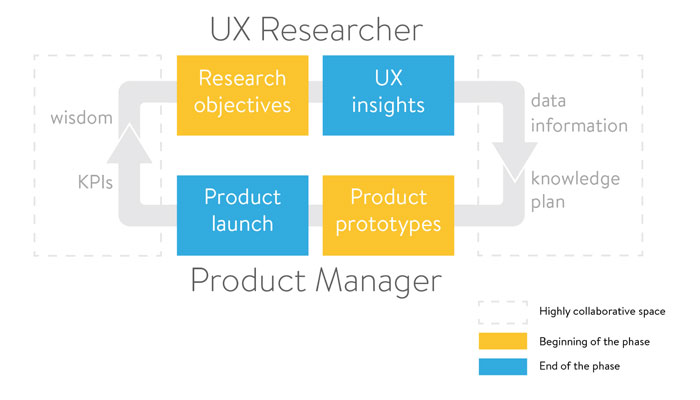
A user experience researcher has a pretty simple goal or at least a goal that seems simple. They look to inform the design process from the point of view of the end-user(s).
UX research strives to prevent designers from creating a product for one user and one user alone: themselves. A user experience researcher wants to let the design team know who the end-users are, what is the context for their use of the product or service, and what they need from the design team.
With good UX design, you are protected from designing the wrong product. Without it, you could up creating a product that no one wants.
All the hard work, time, and money put into the project would be wasted. It also removes assumptions from your design process. Thanks to UX research, you will now have data to back up your design decisions.
On top of all this, with UX research, you will also know the places and direction to focus the project’s resources. UX research finds the right requirements at the right time for the right people. It’s a deeply vital part of any project.
You can tell when a product online has not used UX research. Avoid their mistakes by using it on your projects, no matter how big or small. There are plenty of online tools that can help anyone, from large firms to individual freelancers, do effective UX research.
How UX Research is Conducted
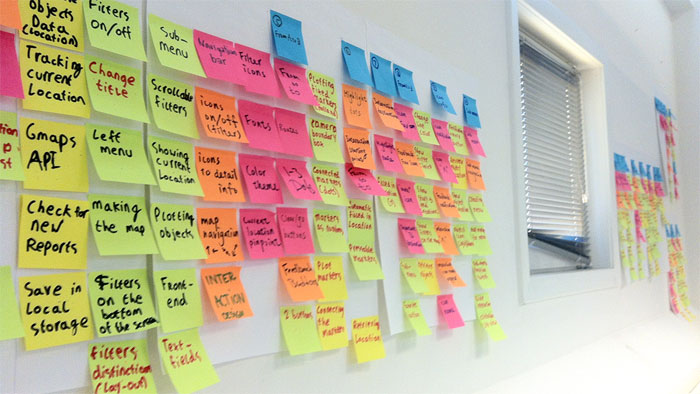
User experience research consists of two parts: gathering data and synthesizing that data so that you can use it to improve usability.
During the early portions of the project, UX research focuses on learning what the requirements are from the project stakeholders as well as learning about the needs, wants, and goals of the end users.
The UX researchers will collect surveys, conduct interviews, and observe both current and prospective users. They also review existing data, literature, and analytics.
As the product development lifecycle continues, UX research shifts the focus to usability and sentiment. At this point, US researchers conduct usability tests, interviews of users about the process, and A/B tests. They want to be testing assumptions that can improve the effectiveness and appeal of the design.
Quantitative and Qualitative UX Research Methods
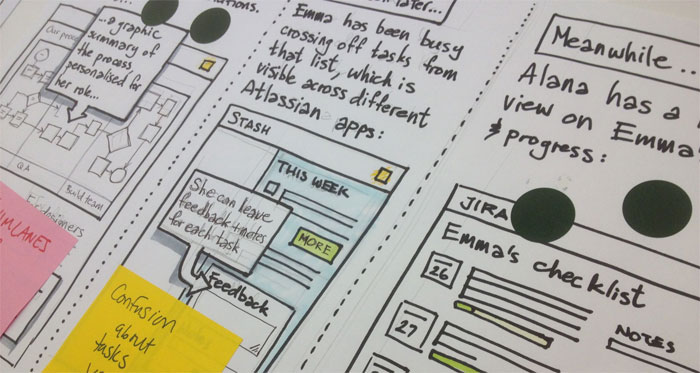
Quantitative UX research methods are those that can be measured with numbers. It asks and answers questions like how many clicks an area received or what percentage of users were able to find the call to action. It’s very useful for understanding statistical likelihoods. It can help paint a hard, clear picture of what is going on in an app or site.
Qualitative research, on the other hand, is “softer”. Its goal is to help design teams understand why people do what they so. It is often conducted through conversations and interviews. Some common questions used when conducting qualitative UX research include “why didn’t people see the call to action?” and “what other things did people notice on the webpage?”
A user experience researcher can specialize in particular kinds of tests or interviews. However, most UX researchers can and do conduct many different UX research methods. This means that a wide enough amount of info can be gathered in order to allow the team to design in a smart, contextual and user-centered way.
Techniques Used for UX Research

- Interviews- Interviews are a very useful way to get a lot of information. You can ask questions and gather statements that answer a variety of different questions. By interviewing someone, you can get a sense of who your users are and what they actually do.
- Contextual inquiries/interviews- A contextual inquiry is a way UX researchers observe how users interact with interfaces based on their actual environments. These contextual inquiries are helpful because you can interview people as they do things without much interference. You can learn what issues the users face, what kind of equipment they use, what their preferences are, and how long it takes for them to complete regular tasks.
- Diary studies- In these sorts of studies, the UX researchers provide participants with the materials and structure to record the daily events, tasks, and perceptions they experience about a subject. You can collect both temporal and longitudinal information through this technique.
- Card sorting- This is a UX research technique where participants organize topics into various categories that make sense to them. They will also help the researchers label these groups. This technique helps design and/or evaluate the informational architecture of websites or apps. This will also help you understand users’ understanding of topics and their expectations.
- Usability testing- This is a very important step in a lot of user experience research. It allows you to evaluate products and services by testing them with a representative set of users. The participants will complete tasks while you observe and take notes. This can allow you to find many problems before they are coded into the product.
Common UX Research Methodologies

UX research can take many forms, from in-person interviews to unmoderated A/B tests to online surveys and much, much more. All of them are designed to answer important questions a design team has about the user experience. However, all of them share three key methodologies: observation, understanding, and analysis.
- Observation
This is the first step in conducting any form of research. You need to observe the world around you. Beginning researchers, like beginning photographers, need to learn how to see what’s around them, They need to start picking up on the nervous ticks that may show interview subjects are uncertain or stressed.
They need to learn how to notice apparently minor references that actually indicate with long-held beliefs or deeply entrenched thoughts that should be further looked at.
While observation may seem to be a simple skill, it is easily clouded by unconscious biases. Everyone has this unconscious biases. If you want to be a user experience researcher, you need to train yourself to observe and take notes so you can begin to see patterns across what seem like very diverse groups of people.
- Understanding
Understanding is something you do every day in normal life. We work hard to understand our families, friends, and coworkers. We try to grasp the point and figure out the reasons for unfamiliar concepts or points of contention. In terms of UX research, understanding is not so much about disagreements as much as it concerns mental models.
What is a mental model? A mental model is the image a person has in their head when they think of a specific phrase or situation. If someone owns a red sedan car, their mental model of “car” will probably be different from the mental model of someone who owns a white SUV.
Mental models inform the decisions people make. If asking someone how long it takes to drive a long distance, the answer will depend upon a number of factors based on their mental models, like their car’s gas mileage.
UX researchers should understand the mental models of those they test or interview. Everyone speaks in shorthand frequently. A user experience researcher needs to recognize the shorthand based on the mental model of the person who is speaking.
Also, if a researcher can correctly identify someone’s mental model, they can share this info with the rest of the design team and help make sure the design accommodates this mental model.
- Analysis
After you have conducted your research and gathered your data, you need to make it usable for your design team. Analysis is the way you do this. It is the process you do where you identify the patterns revealed by the research, propose possible reasons for these patterns or offer solutions, and make recommendations.
Sometimes, analysis techniques include the creation of personas and scenarios. It might also require you to described mental models or provide charts and graphs that represent behaviors or statistics. Research is only valuable if it’s shared with the design team, otherwise all your effort and planning is for naught. It needs to be integrated into the design process.
Types of UX Research Tests

Questionnaires and Surveys
You’ve filled out many surveys and questionnaires in your life. They’re an easy way to collect a large amount of info about any given group in a small time frame and minimal cost.
They’re a good choice for projects that are looking at a large and diverse group of users or a group of people with a high concern for anonymity. It’s easy to create surveys with a number of tools available online, like Google Docs or Wufoo. You can then email these surveys out and get hundreds of responses back in only a few minutes.
There are downsides to using these tools, however. Using these form of research means that the UX researchers won’t be able to directly interact with respondents, so they can’t help with interpreting questions or reframing if they wording isn’t quite right.
They rarely allow the opportunity for follow up, and when they do allow for it, it’s quite limited. Surveys get a much higher response rate when they don’t; require any kind of login or any input of contact info. This anonymity makes it extremely hard to ask for more details or clarification about responses.
Card Sorts
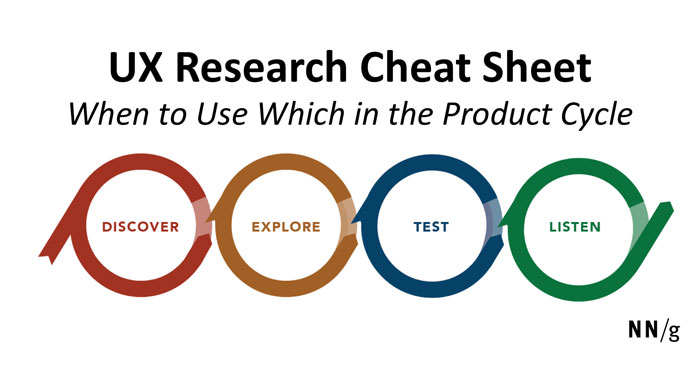
Card sorts are often integrated into interviews or usability tests. Users are given a set of terms and are then asked to categorize them. They can be closed or open. If closed, the user is also given the category names. Open card sorts allow the user to create whatever categories they feel are the best fit.
The goal of card sorts is to explore the relationships between content. It helps design teams to better understand what hierarchy a user sees. Card sorts see a lot of use by information architects and content strategists since they allow them to test out hierarchy theories or help develop a sitemap.
Usability Tests
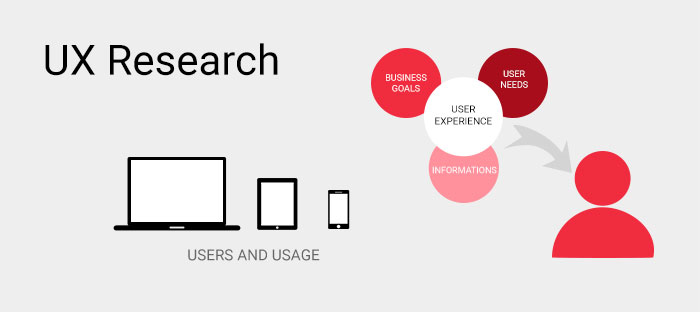
Usability testing is very common in UX research. It asks potential or current users of the product or service to complete tasks and observe their behavior to see what eh actual usability of the product or service is.
It can be done with live versions of apps or site, prototypes, works-in-progress, clickable wireframe, or even paper and pencil. There are many variations of usability tests, often tailored to the product or service that’s being tested, but there are three common types: moderated, unmoderated, and guerilla.
Moderated usability tests are more traditional than the other two. They can be conducted in person or through screen share and video. Often, whole usability labs are set up. They often have one-way mirrors for stakeholders and team members to observe the participants.
An unbiased facilitator will sit and talk with the user, reading the task aloud and asking the user to think aloud as they perform it. This facilitator’s job is to perform as a conduit between the stakeholders and the user. They must phrase questions to evaluate the effectiveness of the design. They are helping to test assumptions all while helping the participants feel comfortable with the testing.
Unmoderated usability tests are also sometimes called asynchronous research. It is conducted online at the user’s convenience. All instructions are delivered through either recorded audio or video. Users click a button to start the test and record their screen and/or audio.
Much as with moderated usability testing, users are asked to think aloud. There is, however, no facilitator to ask follow-up questions. You can design and distribute these unmoderated usability tests through a number of websites and they are typically much cheaper than moderated usability tests.
Guerilla testing is lightweight and modern. It’s the least traditional form of usability testing. Rather than renting or building a usability lab, this research is done out in the community of potential or current users.
UX researchers go out and find their users at coffee shops and subway stations, where they ask them to complete some basic tasks on a site or with a service in exchange for some benefit like a cup of coffee, a few dollars, or just out of the kindness of their hearts.
This can be a good option for those design teams on a budget. It works best for products and services that have a large user base. Niche products have issues garnering reliable or sufficient information from the random selection that comes from guerilla testing.
Tree Tests

Tree tests are a good way to evaluate a website’s information architecture. In a tree tests, a user is given a task and show the top level of a sitemap. Like with usability tests, users are asked to talk through how they are going to go about doing the task. Unlike usability tests, however, the user will not see a screen when they click a site section.
They will instead see the next level of the website’s architecture. The goal of this form of testing is to identify if information is being categorized appropriately and how well the nomenclature demonstrates the sections of the sites.
A/B Tests
This is another way UX researchers find out what actions users take. A/B tests are used when designers are having issues choosing between two options. These options can be two styles of content, whether to use a button or a link or two different approaches to a home screen.
In an A/B test, each version that is being evaluated shown to an equal number of users. The analytics of which version better accomplish the desired goal are then reviewed. This form of testing is very helpful for comparing reviewed screens to older versions of that screen. It also helps to collect data to prove an assumption.
How to Become a UX Researcher

You can start doing UX research in two ways.
You can read as many books as possible and learn the correct way to conduct UX research before you start doing anything. This is the approach many people take. It’s quite normal. Many people feel as though they need some basic skills in their toolset before they can really offer any value to a design team as a UX researcher. However, this approach is far from flawless.
Like anything else, UX research is a skill. Like all skills, when you first start out, you’re typically not very good at it. There is no real way to avoid making mistakes when you first start.
No matter how many books you read or how many classes you take, you’re not going to start out as a perfect UX researcher. You’ll find yourself asking leading questions, being totally biased, and making all sorts of other mistakes, even if you’ve been reading and learning for six months.
So that leaves the other way to start doing UX research: start doing it!
Start off by moderating sessions, observing the behavior of the participants, asking them questions, and learn as you conduct UX research. Yes, you’ll make mistakes, but that’s normal and even expected when you’re just starting out in UX research.
In the short-term, this is a much more difficult approach. You’ll get much more out of it, however, and much faster. You’ll be going through this stage if you spend months and months researching, anyway.
By jumping into the deep end of UX research, you’ll begin honing your skills at research and pattern identification. The sooner you do this, the better off you’re going to be as a UX researcher.
Start setting up studies. Write down your observations, ask questions, listen to the users, and learn. The participants in a study will help you make your tests better, too, just as they help you make your product better.
All you have to do is listen to them and pay attention. The more you set up and design these studies, the more you pay attention, the better and more effective your studies will be.
As you continue to do UX research, you’ll start learning what the best practices are from trying things out to seeing what works and what does not work. Simply reading lists of best practices isn’t going to give you a real understanding of how they apply in the real world. Only repeated practice over time will allow you to get a real sense of what works best.
Don’t be afraid to get tripped up or make mistakes, even large ones. The best and fastest way to become a great UX researcher is to get out there and start doing UX research.
Remember that you’re still learning. As you practice UX research, keep up with your reading and learning, as your experience with doing it will make those lessons make more sense, much as working on an engine will make books about engine repair manuals make more sense.
What else will help?
Shadow Experienced UX Researchers

UX researchers are busy people with a lot of extra technically unskilled work that needs to get done. If you can take notes, you can help them out and learn something in the process.
Ask an experienced UX researcher if you can sit in on a moderated usability session and take notes of them. If you can follow instructions and pay good enough attention to take useful notes, most UX researchers will welcome the hope.
These note-taking sessions are great opportunities to learn. You get a chance to work with more experienced researchers and learn from them as they work.
Watch how experienced researchers run their research sessions. What do they do? What questions do they ask? How do they manage difficulties? Be an information sponge. Get as much info as you can during the sessions. Ask questions about how they are tackling certain problems.
Also, think about asking to sit in on the UX research debrief reports. You can see how UX research gets presented to stakeholders and see how it gets analyzed. Learn how to take the data that’s been gathered and turn it into something useful.
Take Experienced UX Researchers Out to Coffee
Set up a coffee meeting with three to five experienced UX researchers and pick their brains. Ask them what you should be doing to conduct good UX research, what you should be looking for, and what resources are out there so you can stay on the cutting edge of this developing field.
Pay close attention to the answers you get. Use their experiences as models for your own education in UX research. Learn how you can take their advice and lessons so you put them into practice.
Keep Reading Up on UX Research
Once you start conducting or sitting in on studies, start reading. Look for blogs, books, courses, podcasts, and conferences that cover UX research and related topics.
These are great tools to help you get better, though keep in mind that all this homework is no substitute for actually practicing UX research. It’s easy to just passively consume information, but it’s not going to help you be a better UX researcher. Learn what you can and then put it into practice.
Some Guiding Principles for UX Researchers

It is Easier to Learn What You Got Wrong
UX research is very good for helping us figure out what we got wrong. If you add a new feature to your product or service and the first set of participants hate it, you know you have a problem. That doesn’t mean that a lack of comment means something works, however.
There is No “One Size Fits All” Sample Size
Sample sizes should be based on the risks that you’re willing to assume for a piece of research. They need to be calculated based on the type and form of UX research that you’re doing. Using a single sample size for all your UX research is a very flawed approach. Avoid doing it.
Conducting Testing on Just One User is Not Useless
Large tests aren’t the only ones that reveal important information. The first user can sit down, try to save their work, and the process can instantly reveal itself as broken. Do you really need to try the process out with more users? No! Sometimes, just one test can reveal major problems.
Larger Sample Sizes Offer Better Accuracy
A bigger sample size makes it more likely for the data to be accurate. The general rule is that, if you want to double the accuracy, you’ll need to increase the sample size by a factor of four.
Randomizing Can Help Overcome Research Design Flaws
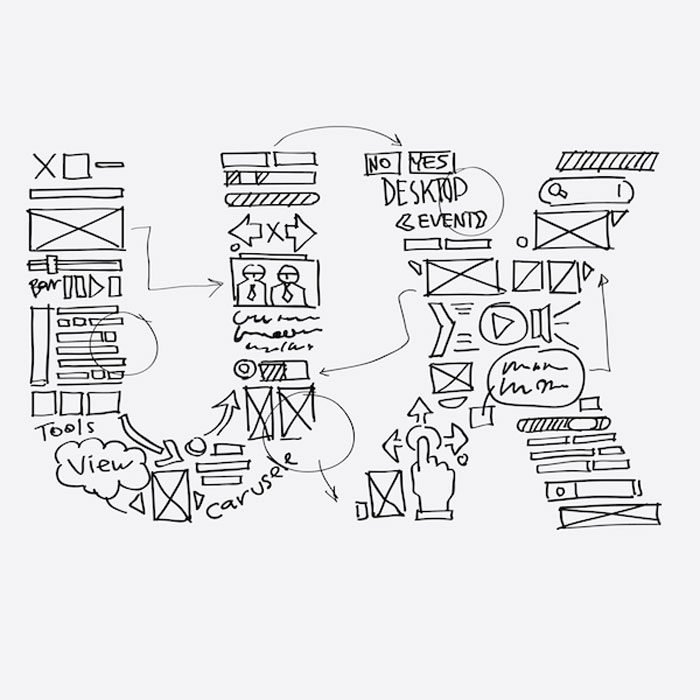
If it’s possible for you to change the order of the questions, responses, process flow, and other such items, do so. The more random the flow of these things are, the more likely you are to get consistent results. It helps combat experimental design flaws.
Research Results Don’t Have an Owner
The data you collect does not belong to you. It is not the team’s. It belongs to the whole company. You need to get your data out to the company as a whole. This makes it much more likely that it will make an impact and get the company to start focusing on user needs. UX data needs to flow so that everyone can reap the rewards.
Know That Scale Ratings Aren’t Very Important
There’s a lot of arguments about whether a y-point scale is better or worse than an x-point scale, or whether or not you should have a neutral rating. At the end of the day, it doesn’t really matter, especially not if you’re going to waste 10 minutes worrying about it. Just pick a scale and get started on doing your UX research.
Participants Should Demonstrate Personas
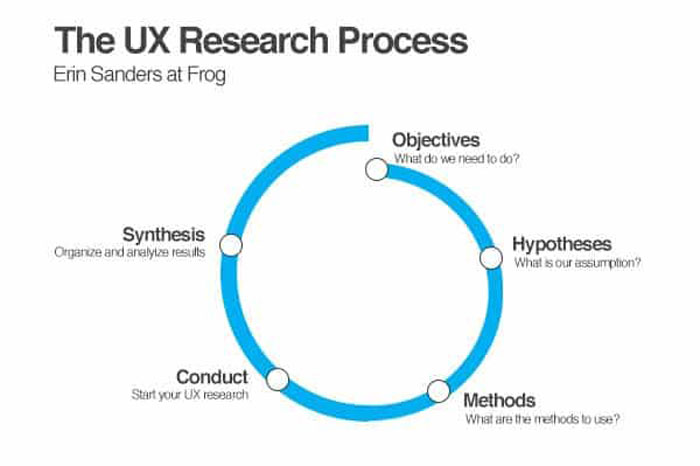
Your product is not likely to be used by every person under the sun. Not everyone fits into your target audience. Learn what the user personas for your product are. Recruit your research participants based on those personas. That way, you are more likely to get results that are actually useful for your project’s design process. You can’t please everyone and trying to do so is a waste of resources.
What People Say Versus What They Do
Both what people say and what they do matter, even if they are different, even opposite, from each other. One is not more important than the other. Exploring the disconnect can reveal a lot. As you do more UX research, you’ll get a sense of when people are saying that they want what they really want, when they don’t want what they say they want, and when it matters.
What is the Typical UX Researcher Salary?

An average UX designer can make anywhere from $2,247 a year to $20, 566 a year. That’s a big range! Experience plays a big factor, as does who you work for and where you’re working at.
As you can expect, new UX designers make less, as do most people working for very small firms or even as freelancers. Larger companies tend to pay more. Location also matters, though not quite as much for UX researchers as for many other IT field jobs, since UX researchers are likely traveling to wherever the target market is anyway.
Ending thoughts on being a UX researcher
If everything we’ve discussed interest you, start seeing how you can get into UX research. You can be a great (and well-paid) member of a dynamic design team while helping make sure people get products they enjoy using!
If you enjoyed reading this article about UX researcher, you should read these as well:
- 7 steps to become a UI/UX designer
- 6 Animation Guidelines for UX Design
- Need help choosing a UX/UI Tool in 2018? Check these options
The post UX Researcher: Job description and how to become one appeared first on Design your way.
Source: https://ift.tt/2w1wvHl

No comments:
Post a Comment